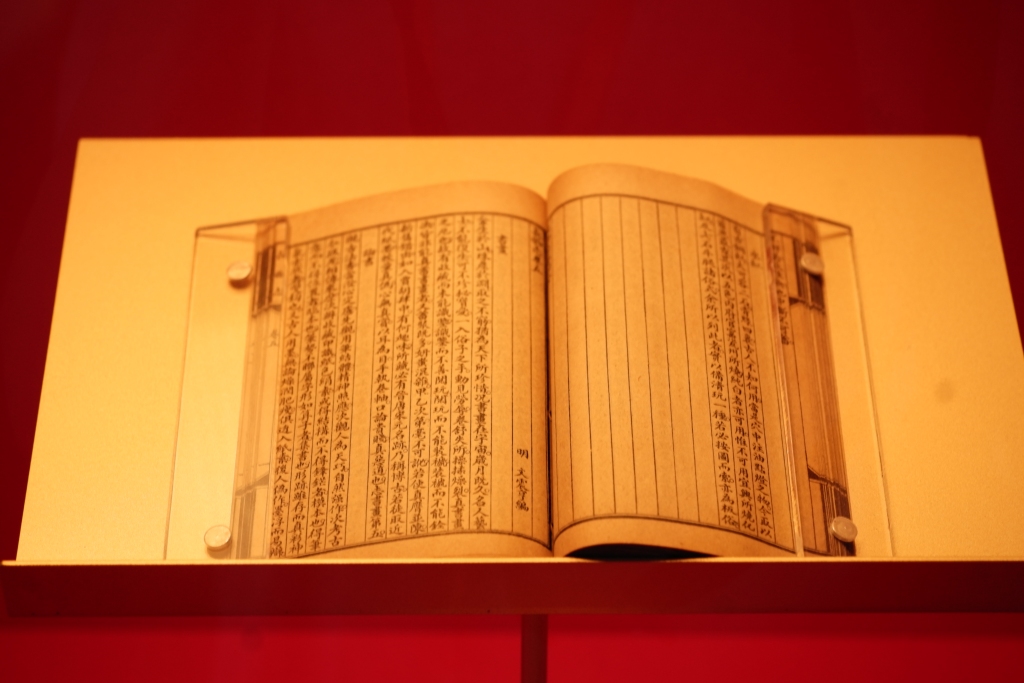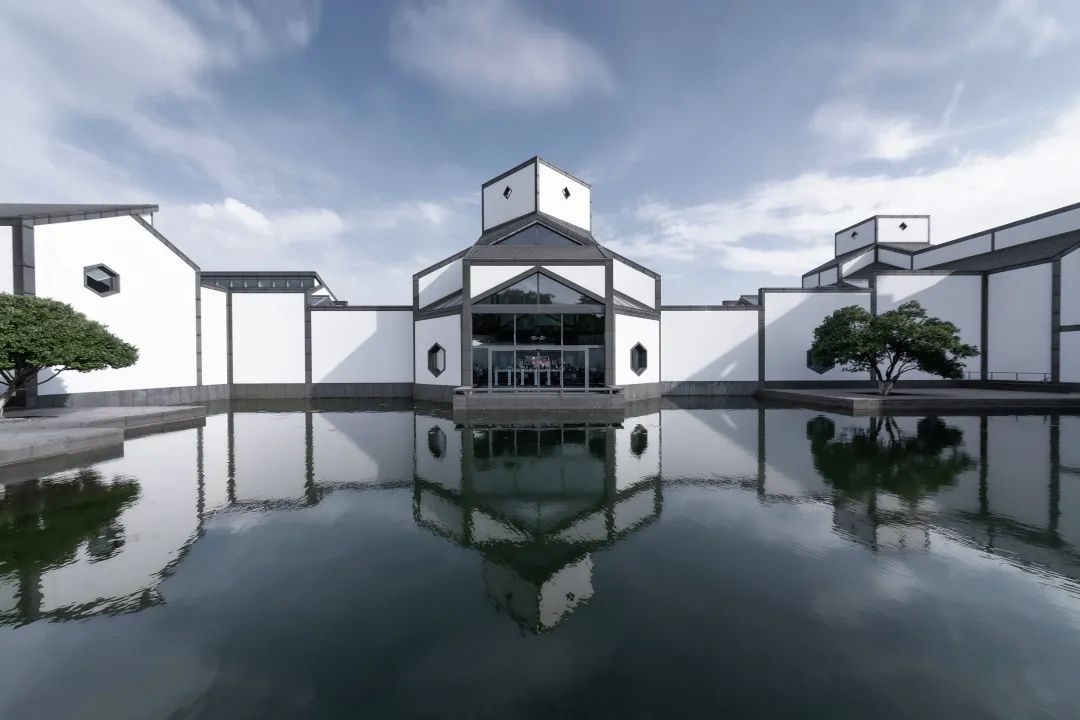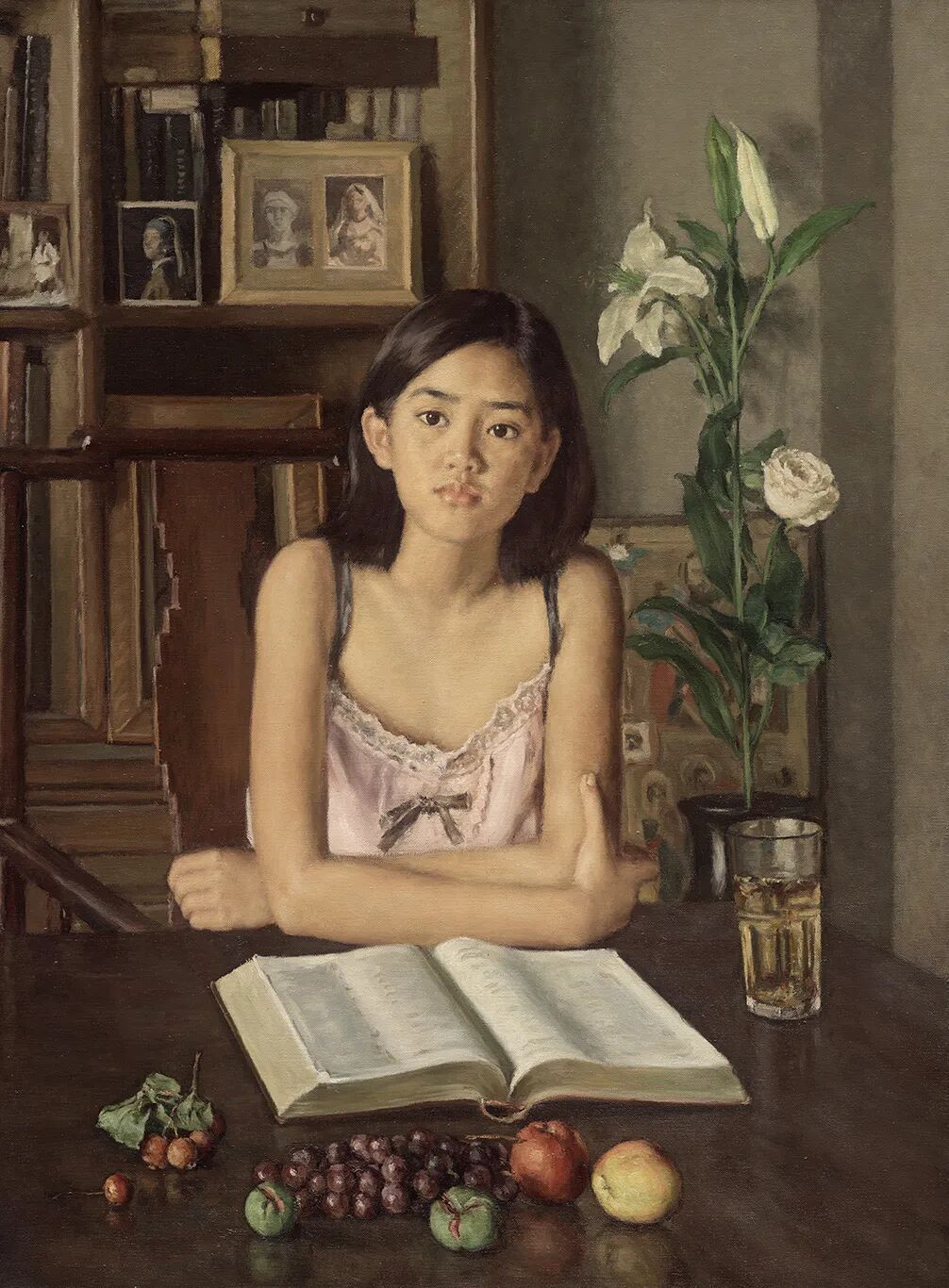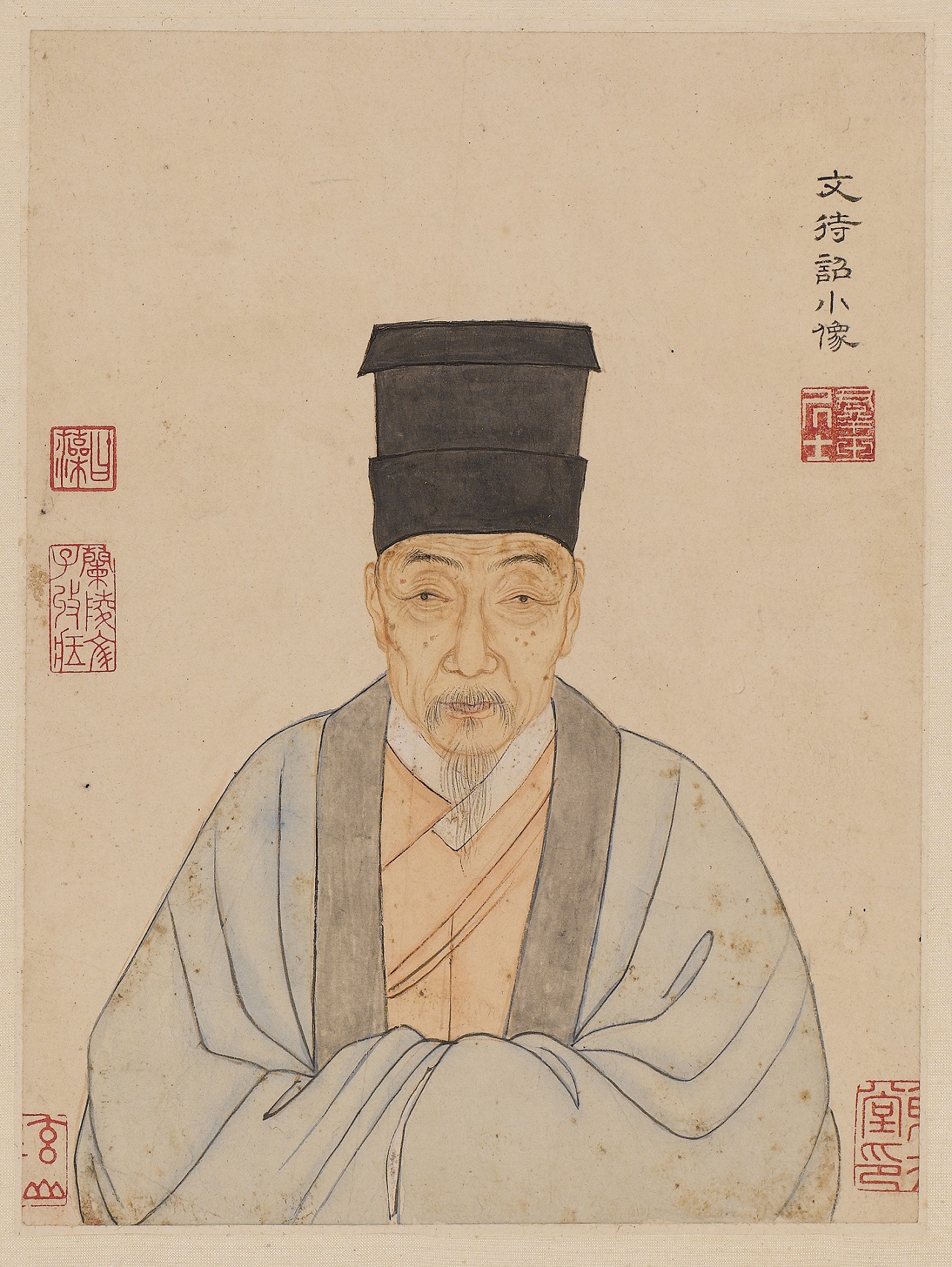
A shelf of ancient books, a whiff of faint fragrance, a window of bamboo shadows, an ancient inkstone, and a cup of clear tea. These seemingly useless "objects" built a spiritual paradise for Ming Dynasty literati to resist the secular world.
The Paper has learned that the special exhibition "From Humble Administrator's Garden to "Changwuzhi" - The Aesthetic Life of Ming Dynasty Literati" was recently opened to the public at the Suzhou Museum. The exhibition is based on "Changwuzhi", a monograph on life aesthetics by Ming Dynasty literati, calligrapher and painter Wen Zhenheng (1585-1645). Through five poetic units, the exhibition takes the audience back to the time when Humble Administrator's Garden was first built 500 years ago, and experiences the elegant life aesthetics of late Ming literati. A number of important cultural relics from the Suzhou Museum's collection are also on display, including Wang Meng's "Picture of Bamboo and Rocks" from the Yuan Dynasty, Shen Zhou's "Flowers and Birds" from the Ming Dynasty, and Wen Zhengming's "Flower Poems in Small Regular Script" etc.

The "Records of Superfluous Things" on display, a lithographed edition of the Shanghai Civilization Bookstore in the fourth year of the Republic of China (1915), collected by Suzhou Museum. Photo by The Paper
From Humble Administrator's Garden to Records of Superfluous Things
As you step into the special exhibition hall on the basement floor of the Suzhou Museum, you are greeted by a simple and pure atmosphere of literati. It seems as if time has gone back to 1525, the fourth year of Jiajing in the Ming Dynasty. That year was the first year of the Humble Administrator's Garden, and Suzhou literati gathered here to recite poems, paint, appreciate flowers and drink tea.
The exhibition first reveals the little-known spiritual bond between the Humble Administrator's Garden and the "Records of Superfluous Things". Wen Zhenheng was born into a cultural family in Suzhou. His great-grandfather was the calligrapher and painter Wen Zhengming who participated in the design of the Humble Administrator's Garden. When the Humble Administrator's Garden was first built in 1525, Wen Zhengming was invited to draw an album of 31 scenes in the garden and wrote "Wang's Humble Administrator's Garden". Nearly a hundred years later, the writing of Wen Zhenheng's "Records of Superfluous Things" also has a clear relationship with the influence of the Humble Administrator's Garden. In addition to presenting Wen Zhenheng's "Records of Superfluous Things", the exhibition's prologue hall also exhibits Wen Zhengming's painting of the Humble Administrator's Garden copied by Zhang Jin.

Ming Dynasty Wen Zhengming's "Three Wonders" (partial)
The word "long-lived things" comes from "Shishuo Xinyu·Virtue", and its original meaning is superfluous things. But in Wen Zhenheng's world, these "external things" have become an important carrier of the identity and spiritual sustenance of literati. The book "Changwuzhi" has 12 volumes, covering all aspects of daily life such as houses, flowers and trees, water and rocks, birds and fish, calligraphy and painting, tables and couches, utensils, etc. In the book, Wen Zhenheng does not talk about the ordinary functions of doors, windows and rooms, but pursues an artistic lifestyle from the height of literati's elegance.

Exhibition site
"Wen Zhenheng's original intention in writing this book was that he was worried about the gradual changes in the aesthetics and skills of the people in Wu, and he wanted to make some preparations to protect this elegance through this book." According to Lv Jian, the content planner of this exhibition, the exhibition is divided into five units: "Dreaming in the Prologue Hall·Flower Gods of the Four Seasons", "Spring·The Secret Fragrance of Wisteria in the Quiet Path", "Summer·Rain Beating Banana Leaves to Cultivate Ming Ambitions", "Autumn·Chrysanthemum Silk Reveals the Wonders of Paintings to Peep into the Heart", and "Winter·Reading Letters and Choosing Utensils among Plum Blossoms to Understand the Realm". Through flowers, burning incense, tasting tea, appreciating paintings, choosing utensils and other dimensions, the exhibition invites everyone to follow the objects and experience the aesthetic life of literati in the Ming Dynasty.

Exhibition site
The Elegance of Ming Dynasty People in a Burner of Incense and a Pot of Tea
The reporter from The Paper saw at the scene that the "Spring" unit focuses on the culture of incense, using objects such as the Yuan Longquan kiln three-legged incense burner with twisted wire ears and the Ming bronze incense burner to present the elegant springtime charm of "fragrance and natural harmony".

Yuan Longquan kiln three-legged incense burner with twisted wire ears
The Yuan Dynasty Longquan kiln twisted wire ear three-legged incense burner on display is covered with green glaze, the glaze color is pink and green, and the cracks are faintly visible, showing the legacy of the Song Dynasty style of Longquan kiln. This burner is not only an elegant incense burner, but also witnesses the inheritance of Longquan porcelain making skills in the Yuan Dynasty. It is a precious evidence for studying Yuan porcelain and incense culture.

Ming copper incense burner

Display of bamboo-shaped incense tubes from the Qing Dynasty
The bamboo-shaped incense tubes of the Qing Dynasty are made of copper and are made to resemble bamboo carvings. The craftsmanship follows the ancients' aesthetic principle of "preferring antiquity to time and simplicity to craftsmanship", and the ingenuity is seen in simplicity. In addition, there are also copper incense burners imitating the Xuande period of the Ming Dynasty, as well as various agarwood and benzoin.
The "Summer" unit showcases the aesthetics of tea, using tea utensils such as the Song Dynasty small white glaze cup and the Qing Dynasty imitation Xu Youquan purple clay teapot to interpret the summer leisure of "the sound of rain and the smoke of tea inspire clear thoughts".

Song Dynasty white glaze cup display site
The literati of the Ming Dynasty regarded "the teapot as the father of tea", and tea sets emphasized practicality and elegance. "Changwuzhi" states that "the best teapot is made of sand", and Yixing purple sand teapots are the first choice because of their good air permeability and do not take away the fragrance of tea; tin kettles are highly recommended for boiling water; white porcelain from Ru kiln and Ding kiln are the most respected tea cups, and Xuande kiln pointed foot tea cups are "thick and hard to cool, white as jade", which can be used to match the tea soup. Auxiliary utensils are also exquisite, with tea washers divided into upper and lower layers to filter the residue; tea bottles are preferably made of silver or tin, and tea spoons are mostly made of bamboo or ivory, and teahouses need to be exquisite. The tea set system of the Ming Dynasty inherited the legacy of the Tang and Song dynasties, and was innovated due to the popularity of loose tea, showing the elegance of literati.
Appreciation of Wumen calligraphy and painting and the elegance of artifacts
The "Autumn" unit focuses on the appreciation of calligraphy and painting, using Wumen calligraphy and paintings such as Wang Meng's "Picture of Bamboo and Rocks" in the Yuan Dynasty, Shen Zhou's "Picture of Flowers and Birds" in the Ming Dynasty, and Wen Zhengming's "Picture of the Deep River in May" to outline the elegant charm of autumn where "the fragrance of chrysanthemums lingers and one can see into the heart of the painting."
Wang Meng, one of the Four Masters of the Yuan Dynasty, painted a clump of bamboo and rocks on a slope. The bamboo branches and leaves are sparse, and the rocks are painted with short and vigorous strokes. The sparse bamboo is on the upper left, and the rocks are at the bottom, thick and moist. In the large blank space in the middle of the painting, there are four seven-character quatrains in regular script.

Wang Meng, Yuan Dynasty, Bamboo and Rocks
Wen Zhengming's "A Deep River in May" was created when he was 67 years old. It is a painting of high and far distances. In the distance, there are strange bees soaring into the sky and strange cliffs looking around; in the middle, there are flowing clouds, tall pines, and a solemn pavilion. In front of the door, there is a flat bridge and a winding stream, and an old man is walking with a cane and a child; in the foreground, there are clear waves, exquisite water and rocks, and under the shade of tall trees, there is a pavilion on the water, and two people are chatting. The painting method is purely fine brushwork, light ink and dry texture, and the style is obviously influenced by Wang Meng.

Ming Wen Zhengming's Deep River in May
Shen Zhou's album of "Flowers and Birds" contains ten paintings of nine kinds of flowers: red apricot, magnolia, peony, hollyhock, lily, begonia, rhododendron, hibiscus, pomegranate and a teal. The main method of flower painting is boneless coloring, supplemented by ink and wash, interspersed with sparse and dense, looking up and down, and getting the interest of ancient beauty. The slopes are either dotted with weeds or slightly dotted with moss. The simplicity of the painting is combined with the gentleness, which weakens the characteristics of the Song Dynasty boneless painting method of depicting exquisiteness, and is more in line with the aesthetic taste of literati.

Exhibition site of Ming Dynasty Shen Zhou's Flower and Bird Album (partial)

Ming Dynasty Shen Zhou's Flower and Bird Album (Partial)
The "Winter" unit focuses on the elegance of objects, using ancient objects such as the Longquan Zhi vase from the Song Dynasty and the Lujun glaze vase from the Qianlong period of the Qing Dynasty to create a quiet winter scene of "a cold studio with pure offerings and selected objects".
The Song Dynasty Longquan Zhi vase on display is covered with blue glaze. The glaze is as bright and smooth as the light of a gem, and the color is deep and profound, fully demonstrating the breakthrough exploration of the beauty of glaze color in Song Dynasty porcelain. The exposed body at the bottom is light brown in color, and the body is firm, highlighting the craftsmanship of the Longquan kiln.

Song Dynasty Longquan Zhiping
Song Dynasty ceramics pursued ancient ideas but were not conservative. This vase uses blue glaze to recreate the charm of bronze goblet. It not only inherits the legacy of ritual vessels, but also opens a new chapter in monochrome glaze decoration. It is a typical representative of the Song Dynasty porcelain concept of "retro and innovation".

Song Dynasty Green Glaze Carved Porcelain Vase
The true meaning of Su-style aesthetics lies not in the complexity of carved beams and painted buildings, but in the philosophy of "simplifying the autumn trees"; the spiritual veins of the Wen family are not artistic myths that are high in the clouds, but life beliefs that permeate the four seasons. Wen Zhenheng advocates that the creation of life situations should be "all included in the picture": on the one hand, objects are required to be designed in imitation of objects in existing pictures; on the other hand, drawing on painting composition techniques, the living space is managed as a three-dimensional landscape painting. The exhibition hall uses framed scenery techniques in many places, allowing the audience to appreciate the exhibits through the circular window panes and experience the aesthetics of Jiangnan literati in person.

Exhibition site
The organizers have also set up a flower order in each of the "Spring", "Summer", "Autumn" and "Winter" exhibition halls. Visitors can use their tickets to obtain exhibition cards and NFC bracelets, choose four elegant objects, and combine them with their birth months. The system will automatically match the twelve flower gods of the four seasons in the Humble Administrator's Garden, and they will also receive an exclusively customized flower god commemorative medal.
It is reported that due to the need to protect calligraphy and painting cultural relics, the calligraphy and painting exhibits "From the Humble Administrator's Garden to the Changwuzhi" will be exhibited in two phases. Phase 1 will be from July 1 to August 3, and Phase 2 will be from August 5 to October 26.


Catalogue of paintings and calligraphy on display

Exhibition poster


